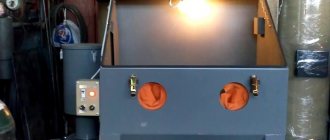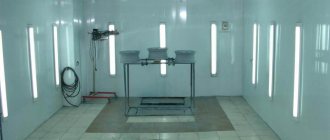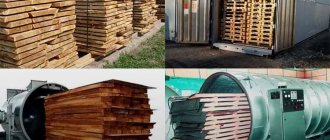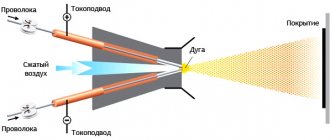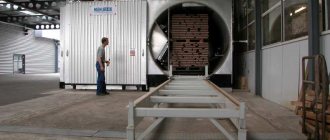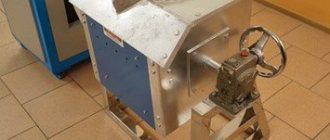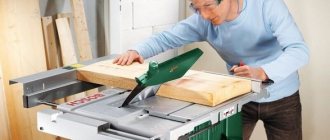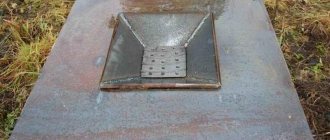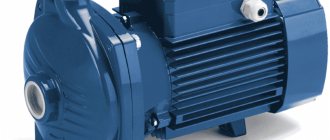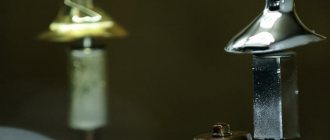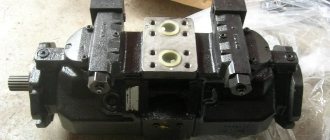Wood products that meet modern requirements can only be obtained from specially selected and prepared raw materials. The humidity indicator becomes decisive in this situation. It takes a long time to bring natural material to the desired condition using the natural method. Depending on the breed, this can take up to several to several decades. If you use a wood drying chamber, the time is significantly reduced. Large production associations have been using such equipment for lumber for a long time.
For small companies, individual entrepreneurs and home craftsmen, this issue becomes relevant, since boards and timber with natural moisture are much cheaper, but they are not suitable for the production of high-quality products. Waiting for the wood to dry naturally is too long. When choosing a method of forced high-quality drying, the question arises whether to purchase ready-made chambers or make them yourself. But first of all, it is necessary to understand the theory, principles and features of this operation.
Wood drying technology
Experience has shown that the process of removing moisture from lumber will be effective if the general rules are followed. They are determined by the following criteria:
- Drying chambers must meet performance and safety standards;
- Strict adherence to drying regimes;
- Correct placement and fixation of workpieces, eliminating warping and cracking;
- Control at all stages of the operation, from preparing raw materials to unloading wood from the chamber.
If the wood dryer is made by yourself, then test drying should be carried out to ensure compliance with industry standards. This will make it possible to adjust the operation mode for a specific device. The basic parameters are the initial moisture content of the wood, the thickness of the timber, boards, and species. According to the rules of the procedure, the drying speed is determined. Deviations are not desirable. Forcing the operation by increasing the temperature will lead to changes in the color of the array and deterioration in performance.
A typical mistake is the incorrect laying of lumber. While in the wood drying chamber, the workpieces undergo structural changes and strong internal stresses arise. When laying, it is necessary to forcefully fasten the material. The boards are laid out tightly to the base and spacers between them for free air movement. Distortions and deviations from the flat plane of each workpiece are eliminated. Otherwise, drying wood can hopelessly damage the lumber. High-quality products will no longer be possible.
Forced air supply significantly speeds up the process. Drying technology has been developed by several generations of craftsmen, and the accumulated experience shows that neglect of the rules causes unnecessary costs, increased cost of the final product and a decrease in its quality.
The need for drying lumber
Previously, when making various fakes using wood, they used timber that had been cut down years earlier so that they could dry evenly.
The need to dry wood
It is very important to get rid of moisture from the wood. For example, making wooden furniture from lumber that is too wet will cause it to dry out over time. After all, the tree can dry out, its size decreases and leads to damage.
Making a door from very dry material can cause it to swell, causing it to not close. If the door panel is selected from blanks that have been dried intermittently in volume, a rupture may occur or it will warp. Its deformation is noticeable in different planes and at different speeds. As a result, tension lines appear inside the material, which cause cracks.
In addition to the fact that the board cracks, transverse deformation is also possible; it can bend in an arc and raise the edges unevenly.
Mostly, cracks in the board are observed along the fibers, initially from the end.
Therefore, all logging operations are advised to dry out. Moreover, drying wood protects the material from damage by fungus, which destroys the tree, prevents changes in the shape and size of the tree, and increases the physical and mechanical qualities of the wood.
Drying lumber
Drying takes a long time, this procedure is complex and expensive. According to established technologies, the material is heated with superheated steam or a hot air stream.
Dried, it lasts longer. And also during use, lumber does not deform. Drying takes place in steam chambers, where damage to the material inside is prevented.
Wood moisture content
To determine the processing mode, it is necessary to check the lumber according to basic indicators. These include species, board thickness and humidity. Drying fresh wood is more difficult. In addition to high humidity, conifers produce resin and a significant shrinkage rate. In such cases, the operation is carried out in two stages with different modes. Pre-drying to 20%, then subsequent drying to the desired value, usually 8-12%. This amount of moisture during the manufacturing process of a product is considered acceptable.
It is impossible to bring the workpiece to lower humidity values, with the exception of special cases of preparing wood with special qualities. An overdried tree begins to absorb moisture from the air, the product swells, changes its geometry until the finished structure is partially or completely destroyed. It is recommended to stop the process when the recommended values are reached. A wood dryer must be equipped with humidity control devices.
Operating principle of convection dryers
Convection drying devices built on the principle of circulating warm air between the original lumber. In one cycle, which lasts from 5 to 14 hours, the wood is dried to the desired percentage of humidity. In addition, the fundamental difference between convection dryers is that the wood is heated by a gaseous coolant. It could be:
- steam;
- heated air-gas mixture;
- gases products of combustion.
When wood material is heated, moisture is released, which is thrown out with the coolant.
Closed-type drying chambers in the form of a separate box are more compact and are distinguished by the fact that a constant set temperature and humidity are maintained throughout the entire volume of the chamber. This design of ovens allows you to dry the original wood material of any type to the required moisture content.
For domestic needs, you can make a minimal design of an infrared dryer
Why is drying needed?
When performing construction work and in furniture production, the permissible moisture content of wood is indicated in the design and estimate documentation. Raw materials are brought to the required condition in drying chambers of various designs. For certain operations in construction, a humidity of 20% is allowed. Furniture is made from 8-10% solid wood. The values are determined taking into account possible changes in structure and geometry during further operation. Workpieces that have not been brought to the required characteristics by drying cannot be used in production.
Wood products are mostly used indoors, where humidity is lower than natural outdoors. Significant changes in dimensions and the occurrence of stress in the product due to drying are inevitable. Cracks and warping that appear impair the appearance and performance characteristics of the finished product. It is not cost-effective to remove moisture in a natural way on an industrial scale, since the raw materials will have to be procured several years before their use. Only a dryer for boards and other lumber can quickly and efficiently remove excess moisture and make the material suitable for producing high-quality products.
Characteristics of dryers
The type of equipment has a rectangular shape, similar to a cabinet, lined with removable panels, at the base of which is a frame.
The composition of the device includes:
- Refrigeration compressor.
- Heat exchange system.
- Refrigeration fittings.
- Evaporator.
- Control automation.
Condensation drying chamber
The quick installation and compact design of the dryer puts it into operation instantly. The heat exchangers are connected to each other by pipelines through which air circulates.
The unit is fully automated and controlled using a programmable controller. Thus, all failures or emergency situations are strictly under control.
The types of apparatus can be of two types, which correspond to different drying temperatures:
- drying up to +45°C - intended for soft wood;
- drying up to +60°C - for hard rocks.
Condensation drying of wood is a high-quality technology that uses a small volume of lumber (up to 30 m3). Also, the process itself is environmentally friendly and safe, and does not involve the release of waste. Enterprises use this method to minimize production costs and the participation of workers.
Drying modes
The effectiveness of drying directly depends on the composition of the air, its humidity and temperature. It’s not worth experimenting with time and temperature without experience, as you can ruin the workpiece. The following values of the normal drying mode for a 40-50 mm board in a convective type chamber can serve as a guide:
- Beech, maple, larch. Temperature 60°C. Drying time at humidity > 35% is at least 130 hours, at 20-25% - about 40 hours;
- Oak, ash, walnut. Temperature 50°C. Drying time at humidity > 35% is at least 255 hours, at 20-25% - 95-100 hours;
- Alder, birch. Temperature 60-65°C. Drying time at humidity > 35% is at least 90 hours, at 20-25% - 30-40 hours;
- Pine, cedar, spruce, fir. Temperature 70°C. Drying time at humidity > 35% is about 70 hours, at 20-25% - at least 30 hours.
Pre-drying of wood with excess moisture content of more than 60% is carried out in a forced mode, increasing the temperature by 10-20%. Deciduous ones can be dried at higher temperatures than coniferous ones.
Condensation chambers: pros and cons
In recent years, in our country there has been interest in another method of drying wood - condensation drying. Some drying chamber manufacturers have begun producing condensing chambers based on the successful experience of foreign manufacturers.
Removing moisture from wood is associated with significant difficulties. They are explained by the relatively large thickness of the lumber and the change in the size of the wood as its moisture content decreases. Changes in the size of dried wood if the drying process is carried out incorrectly can lead to cracking, warping and other drying defects. Therefore, the task of drying lumber is to uniformly reduce the moisture content of the entire batch of dried wood and each board separately along its cross-section and length while maintaining the required quality of the material.
Atmospheric drying
To dry wood, two conditions are required:
- ensuring the evaporation of moisture from the surface of the material;
- creating conditions for intensive movement of moisture to the surface of the wood.
The first condition is ensured mainly by sufficiently low air humidity and significant air velocity at the surface of the wood. The second condition is ensured by a sufficient temperature and humidity of the material being dried, i.e. temperature and humidity of the drying agent.
As long as wood drying has existed, the search has been ongoing for the simplest and most cost-effective way to remove moisture from wood. Moreover, the simplicity of the drying method should be ensured, first of all, by the ease of maintenance of the drying chamber, i.e. the chamber should be equipped with technically uncomplicated and, accordingly, inexpensive technological equipment.
It just so happens that today in the mass drying of lumber the most common methods of removing excess moisture from wood are atmospheric (air) and chamber drying. Atmospheric drying, compared to chamber drying, occurs under conditions that are little conducive to the movement of moisture in the wood due to the relatively low temperature and the impossibility of regulating air humidity. Therefore, it is inevitably accompanied by a great danger of cracks and significant compression of the dry surface of the wood. The only method to reduce the risk of cracking is to reduce the ventilation of the stack, but this measure, by slowing down drying, thereby creates the risk of fungi appearing on the wet surface of the wood. Although atmospheric drying is the most energy-intensive, it should still be recommended as a preliminary drying of freshly cut wood, primarily at large sawmills with a large volume of wood processing.
Chamber drying
In the production of wood products, it is more suitable to dry wood in the form of blanks and lumber in special rooms - drying chambers, which provides the required amount of dry lumber for further wood processing. Chamber drying of wood is based on carrying out the process at air temperature and humidity above atmospheric, i.e. with greater intensity. In addition, during chamber drying it is possible to create the required level of temperature, humidity and air speed in the drying chamber, which allows you to regulate the process depending on the properties of the material and create the most favorable conditions for its drying.
The most common chamber dryers are convection chambers. In the convection chamber, heat transfer occurs through air passing through heat exchangers through which the coolant (hot water or superheated steam) passes. The drying agent (air) circulates through the chamber, passing through drying stacks of lumber and transferring thermal energy to them.
Depending on the technology and stage of the drying process, you can change the parameters of the drying agent:
- humidify using humidifying nozzles in the chamber;
- reduce humidity by removing humid air through air ducts and replacing it with drier air;
- change the temperature by simply lowering it in heat exchangers;
- change the speed and direction of the agent by changing the frequency and direction of rotation of the fans.
Chamber drying of lumber is the most energy-intensive technological process in sawmilling and woodworking. When drying wood, up to 1000-1600 kcal (4500-7000 kJ) of energy is consumed per 1 kg of evaporated moisture,
Condensation drying theory
In recent years, in our country there has been interest in another method of drying wood - condensation drying. Some drying chamber manufacturers have begun producing condensing chambers based on the successful experience of foreign manufacturers. True, they do not always educate customers about all the nuances of this drying method, primarily trying to attract them with the high quality and very low energy consumption of drying in such chambers. Let's try to figure out if this is really so.
Fundamentally, condensation drying chambers do not differ from traditional convective ones. They belong to the same class - convective, chamber, air, i.e. the drying agent in them is heated moist air. The main difference between a condensation chamber is that the heated moist air is not removed from the chamber, as in most convective drying chambers, but is directed to a dehumidification unit, where it is dried, heated and again participates in the drying process. This saves thermal energy, which is usually spent on removing the spent wet drying agent from the chamber.
The energy consumption of condensing dryers, depending on the humidity of the material, is 0.25-0.45 kW/h per 1 kg of evaporated water and increases as it decreases. This is approximately half the energy consumption in conventional batch convection chambers.
The dehumidifier works on the principle of a heat pump. The fan moves air through an evaporator with a cooling system, in which the air temperature drops sharply to the dew point. The moisture contained in the air condenses and is removed from the installation. When 1 kg of water condenses, 0.65 kW of thermal energy is released, which is transferred to the cooled air in the heater. The heat from the compressor and fan also warms up the dehydrated air. The air from the dehumidifier is reused for drying. This cyclical process is repeated until the wood is dried to the required moisture content.
Types of condensation chambers
According to the principle of the process, condensation drying chambers are divided into continuous and periodic chambers. Continuous condensation drying chambers are built quite rarely . To obtain sufficient air circulation in them, in addition to the condenser and the corresponding heating surface of the heating devices, it is necessary to install fans, which are usually located in a special room next to the tunnel. Air is sucked from the wet end and then supplied through the condenser and heating devices to the dry end of the dryer.
Condensation chambers have four main designs:
1. Chambers with a surface condensation device located, like fans and heating devices, outside the chamber.
2. Chambers with a condensation device located in the chamber itself. The humidity of the environment in the chamber is regulated by the temperature of the water in the condensation device, i.e. the speed at which water passes through the condensation pipes. Getting enough air circulation in these dryers is often difficult, especially early in the process when it is important to have strong air circulation.
3. Drying chambers with water-jet condensation devices (patent of G. D. Timan), in which water-jet devices are located in rows along the side walls, and heating devices are installed under the stacks. At the exit from the heat exchanger, the heated air rises, flows horizontally through the gaps of the stack to the longitudinal walls of the chamber where the condensing devices are located, passes through them and reduces the moisture content to the required degree of humidity. Dehydrators retain particles of precipitated water, then the air flows to the heating devices, heats up and rises again. This design has great advantages, since air circulation, temperature and humidity are independent of each other.
4. Chambers with condensation on porous fabrics. Previously, these dryers were constructed entirely (walls, ceilings) of some kind of fabric; the equipment for such a dryer was made inside the building. Heating devices were placed along one wall, and circulation was carried out artificially. When heated, humid air comes into contact with a colder fabric, it gives off some of the moisture to this fabric, which, in turn, evaporates it from the other side into the environment. A later design has rigid walls; inside, at a distance of 30 cm from the side walls, there are walls made of stretched fabric. Between the hard and fabric walls, with the help of fans, cold air is driven from bottom to top, which absorbs moisture deposited inside the dryer on its fabric walls. This air passes only outside the fabric walls of the dryer and in no case comes into contact with the material being dried. Air circulation in the chamber is carried out by a fan located outside. Heating appliances in such a chamber are usually located, as they should be, below the stacks.
Convective or condensation?
The effectiveness of using a particular drying chamber design depends on a number of circumstances. Therefore, in principle, there cannot be one single definite judgment on this issue. The cost of building a convective drying chamber is slightly lower than a condensing chamber, since there is no need for expensive condensing equipment.
Reducing air humidity in convection chambers is carried out exclusively by adding outside air. Thanks to this, a certain dependence on the state of this outside air is created: condensation dryers are completely independent of any external factors, and therefore more careful regulation of the drying process is possible in them,
In recent years, condenser dryers in Russia have become widespread in the wood processing industry along with convection chambers, but in most cases they suffer from some design flaws. The great interest in condenser dryers is explained mainly by the widespread opinion about the significant economic feasibility of drying lumber in such chambers. In addition, condensation drying chambers attract attention as dryers in which wood can be dried with the highest quality. After all, low ambient temperatures mean the absence of thermal load on the material, and therefore the absence of stress in the wood.
The change in wood color, which is often caused by an oxidative reaction, especially at high temperatures, is enhanced by convective drying. Since condensation drying occurs under closed process conditions, i.e. Without constant access of oxygen with fresh air, the color change reaction is suppressed here.
The moisture evaporated from the wood is removed from the condensation dryer as a liquid and its amount can be easily measured. Based on the amount of moisture removed from the wood in this way, it is possible to know with fairly high accuracy the current and final moisture content of the product, and based on these data, it is possible to develop a method for automatically monitoring the drying process.
However, at such a low level of ambient temperatures in the condensation chambers, the wood does not sterilize (i.e. it can be affected by fungi), and the level of hygroscopicity does not decrease (i.e. wood easily picks up moisture from the air and changes its humidity).
Considering that the condensation drying method still reduces energy costs, it is promising to develop new condensation drying chambers with refrigeration units using a refrigerant, allowing the use of not only soft, but also normal drying modes with temperatures of 60-70 “C. Due to the properties of freon, which is used as a refrigerant, low-temperature drying modes with a temperature of 45-50 ° C are used in condensation chambers. When the temperature of the drying agent increases above 45 °C, the efficiency of condensing dryers decreases. Therefore, their productivity is low - after all, the duration of the process here is 2-3 times longer than in traditional convective chamber dryers. In addition, it is also necessary to take into account the increased operating costs of condensation dryers (purchase of freon, maintenance of condensation equipment in working condition).
Condensation drying is used primarily for drying sensitive wood (material with large cross-sections, difficult-to-dry hardwood assortments), i.e. that wood that requires particularly gentle drying. Since such drying of wood is usually carried out at low temperatures (up to +40 ° C), the risk of cracking and warping is significantly reduced. In addition, surface defects, discoloration and cell collapse are reduced.
For small enterprises, we can recommend a condensation drying chamber with a small loading volume, when it is necessary to ensure economical drying of particularly hard hardwood (oak, beech, hornbeam, ash) - then this will be an economically justified solution. But with high electricity prices, condensation drying is no longer so profitable and cost-effective.
In terms of mass drying of lumber, mainly coniferous wood (pine, spruce, larch), condensation drying chambers cannot compete with convective drying chambers, especially when drying lumber to low final wood moisture content (8-10%). Therefore, it is effective to use condensation drying chambers at large sawmills, when drying a large amount of softwood wood is required, primarily to transport humidity (18-20%). It is also effective to use condensation drying chambers in tandem with traditional convection chambers. In this case, the lumber is first dried in a condensation chamber, and then, if necessary, further dried to operating humidity in a convective chamber. With this option, high quality lumber will be ensured, and drying costs will be minimal.
DEREWO.RU — Nikolay Ladeishchikov
DIY drying chamber
If you decide that you are making the dryer yourself, then you should know the main structural elements, their purpose and installation or construction methods. In this case, only those materials are used that can withstand the upcoming loads. Conventional building materials cannot be used. Drying chambers for lumber consist of the following elements:
- A room equipped with a thermal insulation system;
- Heat sources;
- System of forced air supply to the processed material;
- Equipment for laying workpieces;
- Shipping and loading system;
- Devices and tools for controlling humidity and temperature.
Various devices are used as heat sources. Electric heating elements that consume significant amounts of energy. Gas burners are considered more efficient. Sometimes boiler equipment is installed that has high efficiency indicators. The easiest way to make drying chambers for lumber is the convective type. It is difficult to independently assemble an aerodynamic or microwave structure without certain knowledge and skills.
Selection of premises
Choosing the right place for drying will guarantee the effectiveness of the design. You can use either an existing premises or a building erected specifically for this purpose. It must meet the following conditions:
- Thermal insulation. The temperature difference inside and outside the dryer is significant, and in order to maintain it at the required level, heating devices are turned on. Ideally, walls and insulation should have energy efficiency ratings similar to those of a residential building. Thermal insulation layer is made on the walls, floor, ceiling. In this case, the heating devices are turned on for a short period of time during critical temperature drops, and the rest of the time they are turned off, which significantly saves energy consumption;
- Ventilation or dehumidification of air by convection along the internal circuit. Timely removal of moisture will be the key to reducing drying time, so effective ventilation or condensate collection on a cold heat exchanger is necessary in the room. When designing a dryer, this aspect should be emphasized;
- Safety. The electrical circuit, instruments and mechanisms are taken from samples intended for operation at high humidity and temperature, for example, from equipment for the construction of saunas and baths. Fire safety requirements, protection of human health and life must become a priority.
The operating principle of the wood camera is not complicated. But it can only be implemented in a suitable room. The costs of erecting and re-equipping the chamber are one-time. If all requirements are met, then in further operation the dryer, with minimal energy and maintenance costs, is able to produce the required volume of dried wood within the stated period with the desired percentage of humidity.
Dryer body
The body of the kiln for drying lumber is a metal structure built on a foundation. The frame and walls are usually made of aluminum or carbon steel sheets with an anti-corrosion coating. Internal structural elements: deflectors, suspended ceilings and control system units, as well as auxiliary structures are made of aluminum, and mineral wool is used as insulation.
Particular attention should be paid to mineral wool, since the use of low-quality products can give a negative result. Therefore, you should use only well-known mineral wool from trusted companies, which will prevent the heat insulator from settling, and the gaps will allow the insulation to dry even if moisture gets in.
Housings for placing drying equipment
Construction and installation of drying chamber equipment
There are ready-made cameras on sale with excellent performance characteristics, but their cost may not be recouped even over many years with small production volumes. The choice of small companies and individual entrepreneurs often falls on independent construction of the desired structure. The design of a convective type drying chamber is simple. You can use an existing room or building, which is equipped with the devices, instruments and mechanisms necessary to solve the problem.
It should be remembered that the connection of gas equipment must be carried out by authorized organizations. The electrical circuit is designed by a qualified electrician, taking into account the use of equipment at elevated temperatures inside the chamber. Devices, cables, fans, lighting sources are marked with markings indicating the appropriate temperature and humidity conditions of operation. The premises belong to the category with increased fire danger. Fire extinguishing systems are provided at the design stage to avoid problems with regulatory authorities. The design capacity is consistent with the resource supply capabilities. In some areas there are restrictions on the supply of gas and electricity.
Equipment
The set of equipment is small, but requires careful selection when purchasing. The design of the drying chamber, in addition to the standard set of heating element, forced air supply systems can be additionally equipped with devices that increase productivity and automation systems. Temperature sensors included in the circuit can turn on or off the heat source in a timely manner, without human intervention. The equipment for drying chambers includes a device for collecting and removing condensate. High temperature is not enough to quickly remove moisture if there is excess moisture in the air. The cold circuit effectively traps water particles on the surface and is recommended to be installed to increase productivity. Improves performance and preheating of incoming air, which does not cool the processed lumber, thereby reducing drying time.
Press vacuum drying technology
The first technologies for vacuum drying of wood were invented back in 1964. Over the past decades, this method has not only proven its effectiveness, but also gained enormous popularity, which is growing from year to year. The drying process in press-vacuum drying chambers occurs as follows :
- First you need to warm up the wood at atmospheric pressure. To do this, the wood, which is previously placed in a vacuum chamber, must be heated using special heating plates that are located in the working chamber. Heating occurs due to hot water that circulates in the plates. The water is heated by a special boiler. Vacuum processing cannot be started at this stage. When preheating, the temperature should not exceed 100 degrees Celsius. If the temperature is allowed to rise above, the moisture contained in the damp wood may boil. Because of this, the tree may crack, which will lead to defects. It is for these purposes that sensors are used that record temperature indicators, sending commands to the microprocessor, which quickly reduces the heating efficiency;
- The next step is vacuum drying of the wood. After the moisture in the wood warms up to the level required by the user, the vacuum unit is turned on. Its task is to pump out all the air from the working chamber. Due to this, the moisture that is in the tree will begin to reach the shell of the tree, which will evenly moisturize the wood, preventing it from cracking. The moisture is pushed to the surface of the wood, after which it begins to gradually settle on the walls of the vacuum chamber. At this moment, the steam condenser begins to operate, which pumps out the evaporation;
- The next drying step is vacuum compression. This effect occurs when the chamber lid is pressed. Thus, the vacuum additionally plays the role of a specific press that compresses the wood, giving it a smooth surface;
- The next step is conditioning and refrigeration. When the wood is dried to a certain condition, the heating process of the chamber stops. In this case, the vacuum unit is not turned off so that cooling occurs gradually, under pressure. As a result of such a gentle regime, the boards are not deformed. When the material has completely cooled, you need to turn off the vacuum unit and remove the boards from the chamber.
You can buy a vacuum press-drying chamber in Moscow. By contacting our company, you will receive comprehensive advice on the purchase of vacuum equipment for drying wood. If necessary, our employees will select the optimal models of press-drying chambers for you, based on your requests.
Drying chamber operation
Maintenance of the structure, when it is assembled correctly, does not seem to be a difficult process. Drying chambers are not recommended for storing, even temporarily, any foreign objects or goods. Cleanliness is maintained inside the premises. Regular cleaning is required. Removing dust, dirt, and sawdust is necessary, since sufficiently powerful air convection inside the chamber will inevitably lead to foreign substances entering the heat sources, which will reduce their performance, and in the case of using electric or gas heating elements, to the risk of fire. Regular inspection of all structural elements is carried out: thermal insulation, ventilation, heat sources.
